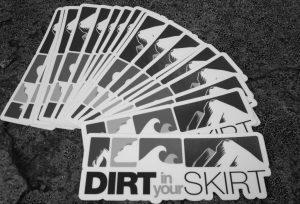SISU Iron Event Review
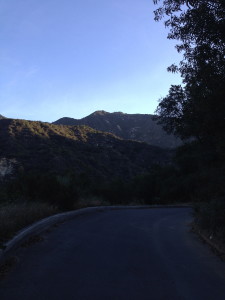
This past weekend I spent in Monrovia, California following and reporting on the SISU Iron event. The SISU Iron falls into the category of Extreme Endurance Event when looking at the OCR world as a whole. This year the SISU Iron offered a 10-, 20-, and 30-Hour Challenge for all levels and is held at Camp Trask – a Boy Scout camp in the mountains above Monrovia. Prior to arriving at the event I had heard mixed things regarding SISU and their events, some had called them a copycat to the larger extreme endurance events, and sort of looked down on the event as a whole. But I went in with an open mind to see how this event would be run.
BACKGROUND
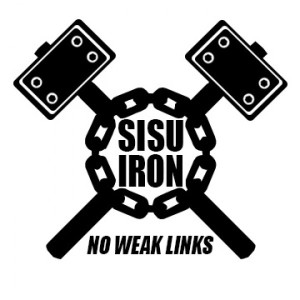 A little background about the SISU Iron, it was originally created by Daren de Heras (Death Race finisher) as a training experience for those looking to do the Spartan Death Race in Pittsfield, Vermont. The event was created to give people a chance to train and to get a feel for what was to come at the famous event. Now the event has grown much further and offers people a bridge between an obstacle race and some of the more extreme challenges out there. It’s more than a Spartan Hurricane Heat but less than a Survival Run or Death Race. It really is somewhere in the middle. From the beginning, the SISU Iron has taken some of the best and most memorable tasks from these bigger events and given athletes a taste of what they are about. However, what I didn’t expect was the Iron really brought in it’s own tasks as well.
A little background about the SISU Iron, it was originally created by Daren de Heras (Death Race finisher) as a training experience for those looking to do the Spartan Death Race in Pittsfield, Vermont. The event was created to give people a chance to train and to get a feel for what was to come at the famous event. Now the event has grown much further and offers people a bridge between an obstacle race and some of the more extreme challenges out there. It’s more than a Spartan Hurricane Heat but less than a Survival Run or Death Race. It really is somewhere in the middle. From the beginning, the SISU Iron has taken some of the best and most memorable tasks from these bigger events and given athletes a taste of what they are about. However, what I didn’t expect was the Iron really brought in it’s own tasks as well.
PRERACE
We arrived at Camp Trask in the mountains above Monrovia, California early Friday afternoon. Originally, I was going to participate but last minute decided to just cover the event. In the late afternoon the participants showed up with and registered. Among the registrants were both known and unknown racers. Some had Death Race experience and others were making a huge leap for the first time. It was definitely a mixed bag and all ages ranging from late teens to mid-sixties. Also including one legally blind young man.
RACE BEGINNING
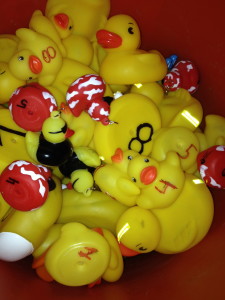 The race began with the participants gathering together for a speech by de Heras and Matt Trinca they welcomed them and instructed them to head up a hill and would be told what to do next. Upon reaching the top of the hill they were each given a cinderblock to bring back down through a stream to the registration area to get their bibs. The racers went under a cement bridge and down the stream around 9pm on Friday evening kicking off the event. Once they got back to the registration area they were given a bib number and instructed to head down the stream further to the frog pond to find rubber duckies with matching numbers to their bibs. All the while the rubber ducky song was blasting through a speaker on repeat. (Song Here)
The race began with the participants gathering together for a speech by de Heras and Matt Trinca they welcomed them and instructed them to head up a hill and would be told what to do next. Upon reaching the top of the hill they were each given a cinderblock to bring back down through a stream to the registration area to get their bibs. The racers went under a cement bridge and down the stream around 9pm on Friday evening kicking off the event. Once they got back to the registration area they were given a bib number and instructed to head down the stream further to the frog pond to find rubber duckies with matching numbers to their bibs. All the while the rubber ducky song was blasting through a speaker on repeat. (Song Here)
Once the racers matched their number to duckies they had a chance to warm up by the bonfire which they were instructed to keep going for the whole event, also chopping and dragging some wood to keep it going in the process. During this time they also were told to memorize the 12 Boy Scout Laws. One racer had showed up late which resulted in the whole group having to go back in the pond after warming up, singing happened and the group was in good spirits. The group was able to warm by the fire again before being split off into teams for a hike up to an abandoned cabin and back with a block of concrete. When they were at the top of the climb they had to remember some of the 12 Boy Scout Laws.
 After the hike they got together back at the Fort – or event HQ. When all teams were back they were given a mental challenge a puzzle they needed to construct. After that a series of physical challenges took place in the fort before coming back together at the amphitheater near the bonfire. Again the group was split up into groups and they all headed up the hill just before sunrise to their next task. This task was starting fire and “making Cookie a cup of tea”. The participants started fire with flint and steel (no matches or lighters) and boiled water and made some tea (tea bags where in the required gear). After making tea they headed back down the hill to the bonfire for some sprints and plyo exercises as the sun came up on a new day.
After the hike they got together back at the Fort – or event HQ. When all teams were back they were given a mental challenge a puzzle they needed to construct. After that a series of physical challenges took place in the fort before coming back together at the amphitheater near the bonfire. Again the group was split up into groups and they all headed up the hill just before sunrise to their next task. This task was starting fire and “making Cookie a cup of tea”. The participants started fire with flint and steel (no matches or lighters) and boiled water and made some tea (tea bags where in the required gear). After making tea they headed back down the hill to the bonfire for some sprints and plyo exercises as the sun came up on a new day.
SATURDAY
 With the 30-Hour underway a new day upon everyone it was time to chase the squirrel and chase the lamb. The next task where the participants had to navigate a couple miles through the woods along a marked trail, overcoming obstacles – a bucket pull, small tree climb, wobbly bridge, tunnel crawl, while trying to catch the Squirrel and Lamb then back to camp. Upon arrival back at camp the group as a whole was put through a 10-minute soul crushing PT session with Coach Pain. Soon after the 20-hour participants joined in.
With the 30-Hour underway a new day upon everyone it was time to chase the squirrel and chase the lamb. The next task where the participants had to navigate a couple miles through the woods along a marked trail, overcoming obstacles – a bucket pull, small tree climb, wobbly bridge, tunnel crawl, while trying to catch the Squirrel and Lamb then back to camp. Upon arrival back at camp the group as a whole was put through a 10-minute soul crushing PT session with Coach Pain. Soon after the 20-hour participants joined in.
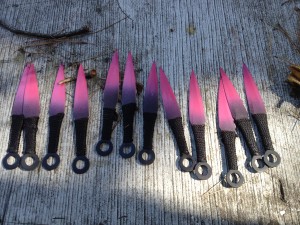 The next task again new groups were formed and the group were tied together in a chain gang way and told bring hike up a certain trail with a tire and kayak. It was the first big test of teamwork. At the same time the Kid’s Iron – a short couple hour challenge started teaching the kids about the wilderness and some survival skills. Once the teams were back (they were gone about an hour). They were instructed to grab a cinder block they had brought down the night before and bring it up to the hill to the skills assessment challenge.
The next task again new groups were formed and the group were tied together in a chain gang way and told bring hike up a certain trail with a tire and kayak. It was the first big test of teamwork. At the same time the Kid’s Iron – a short couple hour challenge started teaching the kids about the wilderness and some survival skills. Once the teams were back (they were gone about an hour). They were instructed to grab a cinder block they had brought down the night before and bring it up to the hill to the skills assessment challenge.
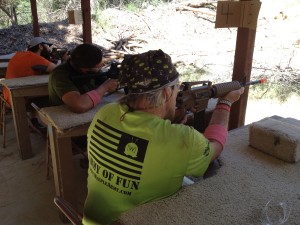 The skills assessment was one of the coolest parts of the SISU Iron. Participants had to show their skills in shooting (and pellet gun), spear throw, and knife throwing. For missed throws they had penalties. After all had completed the skills test everyone was brought back down to the fort and given their next task. Unlike other events, there is no winner or loser, the group moved as a whole from task to task. The next instruction was to run about 5 miles into town to a rock climbing gym. Once at the gym they had to traverse a wall, then run back to the camp. The heat was blistering and most agreed this was the hardest part of the event.
The skills assessment was one of the coolest parts of the SISU Iron. Participants had to show their skills in shooting (and pellet gun), spear throw, and knife throwing. For missed throws they had penalties. After all had completed the skills test everyone was brought back down to the fort and given their next task. Unlike other events, there is no winner or loser, the group moved as a whole from task to task. The next instruction was to run about 5 miles into town to a rock climbing gym. Once at the gym they had to traverse a wall, then run back to the camp. The heat was blistering and most agreed this was the hardest part of the event.
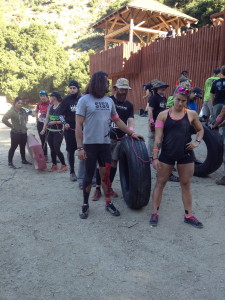 Upon return of everyone to the camp after the run, the camp director was given a donation from all the Iron participants – a new chainsaw. This was the beginning of the community service part of the Iron. For the next couple of hours they helped the camp clean the pond, cut down tall brush, and move and create a brick wall behind the shooting range. After that the final piece of community service was to carry some logs back to camp along with another pile and saw, chop, and stack it for the Boy Scouts. This lasted into the early evening.
Upon return of everyone to the camp after the run, the camp director was given a donation from all the Iron participants – a new chainsaw. This was the beginning of the community service part of the Iron. For the next couple of hours they helped the camp clean the pond, cut down tall brush, and move and create a brick wall behind the shooting range. After that the final piece of community service was to carry some logs back to camp along with another pile and saw, chop, and stack it for the Boy Scouts. This lasted into the early evening.
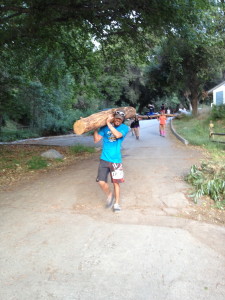 After the community service part it was time for Coach Pain to take over. The participants were put through 2-3 hours of Coaches “love” and unique training which had them crawling, holding poses, and doing lots and lots of PT. It was grueling and it brought many near a breaking point. As it fell into late nighttime, the last challenge was about to begin. A hike up to a waterfall a couple miles away climbing up several concrete dams traveling upstream, once at the waterfall the participants filled up their buckets and food coloring was added and they trucked back up to the camp without losing water.
After the community service part it was time for Coach Pain to take over. The participants were put through 2-3 hours of Coaches “love” and unique training which had them crawling, holding poses, and doing lots and lots of PT. It was grueling and it brought many near a breaking point. As it fell into late nighttime, the last challenge was about to begin. A hike up to a waterfall a couple miles away climbing up several concrete dams traveling upstream, once at the waterfall the participants filled up their buckets and food coloring was added and they trucked back up to the camp without losing water.
 Once they got back to camp it was now around 3:00 – 3:30am. All were instructed to rest and at 6:00am meet at the chapel area of the camp for the awards ceremony. Everyone gathered just after sunrise on the top of the hill looking over the mountains. It was at this time that the Ironman and Ironwoman were announced (an award voted on by the racers for the man and woman who overcame and prevailed on the course). In order to be an official finisher in the Iron you must have completed all the tasks, each task received a merit badge along the way. To be unofficial you had to stay in the event the whole time.
Once they got back to camp it was now around 3:00 – 3:30am. All were instructed to rest and at 6:00am meet at the chapel area of the camp for the awards ceremony. Everyone gathered just after sunrise on the top of the hill looking over the mountains. It was at this time that the Ironman and Ironwoman were announced (an award voted on by the racers for the man and woman who overcame and prevailed on the course). In order to be an official finisher in the Iron you must have completed all the tasks, each task received a merit badge along the way. To be unofficial you had to stay in the event the whole time.
All the people who started the 30-, 20-, and 10-hour challenges all finished, either officially or unofficially.
Conclusion
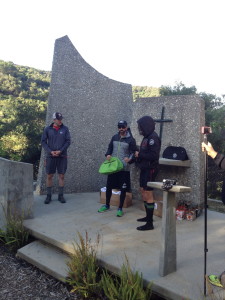 Many will probably read this recap and say it sounds like the Death Race or sounds like Survival Run. In many ways yes it does sound like those events and it is meant to. It is meant to give those looking for more outside of an obstacle race a taste of what’s out there. Throughout the entire event, de Heras paid homage to these other events and told participants which events what challenges were drawn from. However, unlike those big long events where tasks last for 6+ hours per task; every task lasted no longer than 2 or 3 hours. There is no winner or loser in this event and speed is not rewarded. Each new task was started as a group and the fastest just had more recovery time before the next one. The goal is for everyone to finish and everyone to complete tasks together. Many of the challenges were group challenges, and some drew off the Boy Scouts. The merit badges for completed tasks were a nice touch and participants had to sew them on their packs after each challenge.
Many will probably read this recap and say it sounds like the Death Race or sounds like Survival Run. In many ways yes it does sound like those events and it is meant to. It is meant to give those looking for more outside of an obstacle race a taste of what’s out there. Throughout the entire event, de Heras paid homage to these other events and told participants which events what challenges were drawn from. However, unlike those big long events where tasks last for 6+ hours per task; every task lasted no longer than 2 or 3 hours. There is no winner or loser in this event and speed is not rewarded. Each new task was started as a group and the fastest just had more recovery time before the next one. The goal is for everyone to finish and everyone to complete tasks together. Many of the challenges were group challenges, and some drew off the Boy Scouts. The merit badges for completed tasks were a nice touch and participants had to sew them on their packs after each challenge.
My opinion of the event is extremely positive, it was well run, with very few hiccups, the tasks were hard but accomplishable. People pushed beyond themselves and made new bonds along the way. Some tasks were easy, some hard, and some silly. Overall, the most elite and the newest participant all could get something out of this event. Once worth putting on a calendar for next year.










